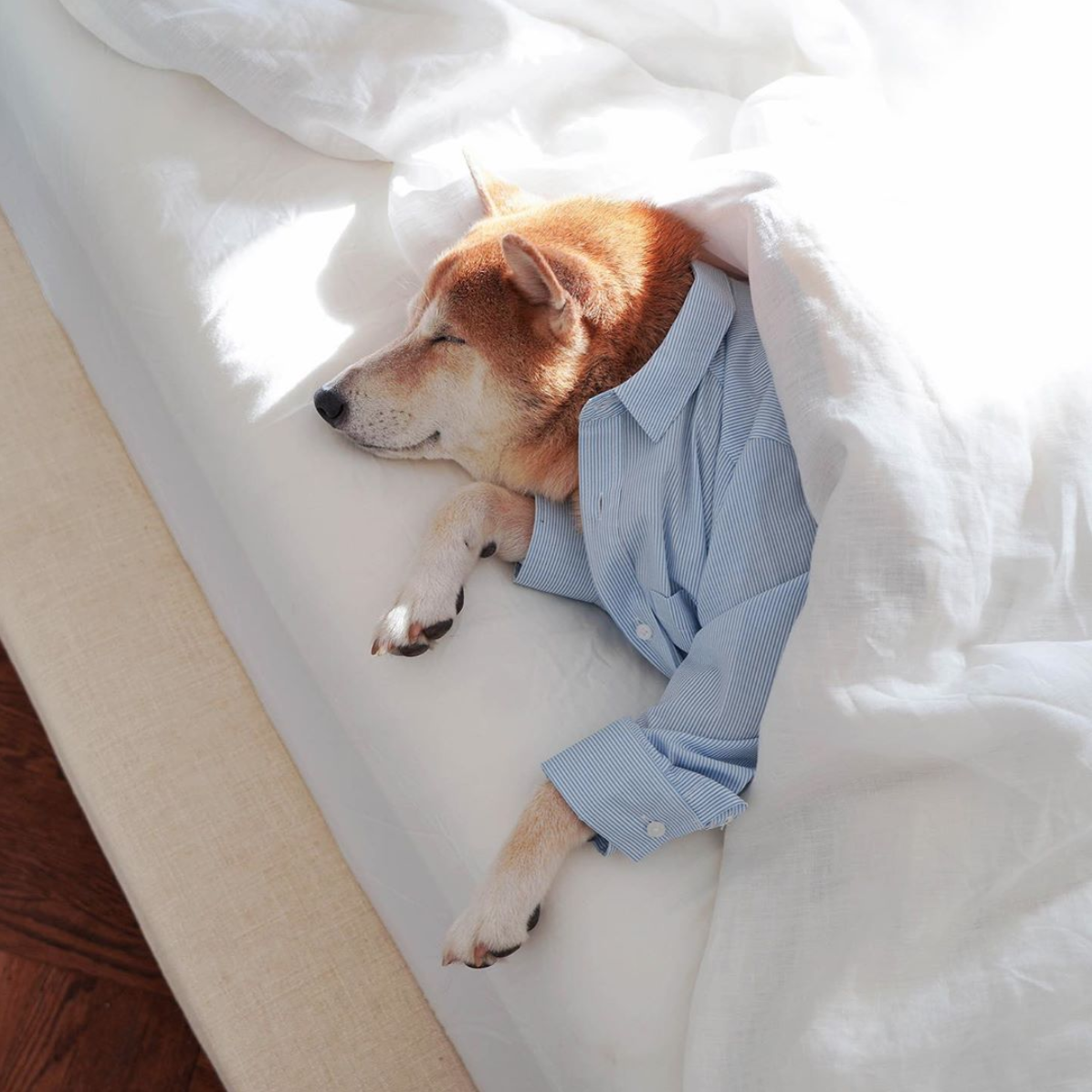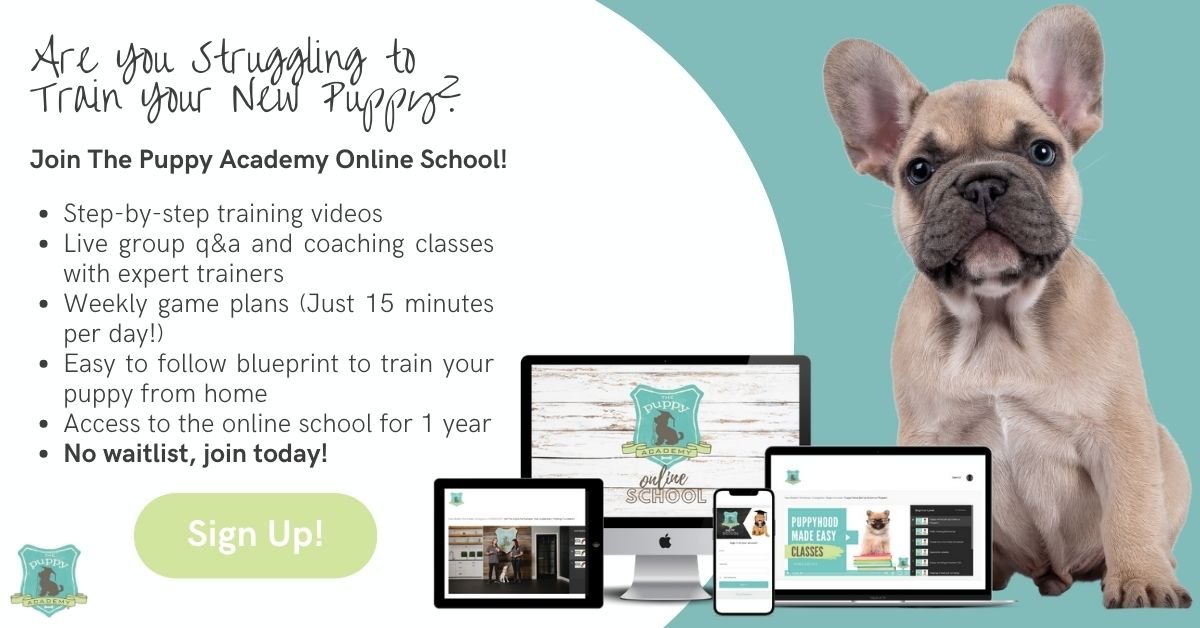Crate, sweet, crate! If you’re potty training, traveling or just looking for a safe place for your puppy to call their own, welcome to crate training 101!
@dirk_thedachshund
If you haven’t considered crate training your new pup, or are still unsure of the use and benefits, there are a few things we can help you understand about how crate training can be an invaluable tool for you and for your pup! At The Puppy Academy, we recommend crate training because of all the benefits that come along with it for both the puppies and their owners. Potty training, impulse control, separation anxiety prevention, safety - all of these factors can be positively impacted by introducing crate training to your puppy!
Picking the Right Crate
First thing’s first, you want to ensure that you are picking the right crate type and size for your puppy. A good rule of thumb is that it needs to be big enough for them to stand, turn, sit and lay down comfortably. And even though this may seem counter-intuitive, puppies feel more at ease in cozy and snug crates - think of dens in the wild that are small underground shelters - because it creates a sense of security. While we as owners often want to give them the whole house to roam, a smaller space also means they will be prone to fewer accidents. Why? Going back to their wilder instincts, puppies will naturally avoid soiling where they sleep. If your puppy is going to the bathroom on one side of the crate, and hanging out on the other side, it’s too big for them.
“Crating is the most valuable tool for new puppy parents. It provides a safe place pups can settle and nap in, providing new puppy owners peace of mind so they can take a break to eat a meal, do household chores, shower, etc. It’s like putting a baby in their crib.”
So Many Crates to Choose From!
@casper via @mensweardog
The pet supply market is saturated with different brands and varieties of crate types for puppies. We narrowed down to tried and true crates, plus included a few tidbits to keep in mind about each crate option.
Plastic - We recommend and use plastic crates as much as possible at The Puppy Academy! Since these crates have a sturdy plastic plus more coverage on the sides, puppies can’t see out as much which in turn helps to calm and settle them by blocking out unnecessary stimuli. Additionally, these crates are great for travel if you plan to bring your puppy with you! Depending on your puppy’s breed and size, you’ll need to verify the requirements with the airline. If you have a small puppy, however, a soft-fabric carrier for under the seat will work perfectly for travel!
Metal Wire - An all-metal wire crate is also a great option for your puppy! Many of these crates come with dividers that you can use to adjust the size so your puppy can gradually grow into it and to avoid accidents inside the crate. These are a great option for large breed pups! If you find that your puppy is too overstimulated and can’t settle down, consider covering the crate with a blanket while leaving a portion open for airflow.
Fabric - Although these collapsible crates are good for secondary shelter and convenient to take with you on short weekend trips, we don’t usually recommend these for young puppies! A soft fabric crate can easily be mistaken as a chew toy for a bored puppy so you may want to wait to introduce a fabric crate when your puppy is older.
While these options are available and we can provide recommendations, ultimately picking a crate type will be entirely up to you and the needs of your puppy! Some puppies like more enclosed spaces while others prefer to see their surroundings. You may have to try out different options first before settling on one type to use.
Introducing your puppy to their new crate can seem like a daunting task but remember to be patient with them as they learn their new surroundings especially with crate training! At The Puppy Academy, our goal is to ensure that all our puppies learn to love and feel comfortable in their crate. We even call it their "House" because we want their crate to feel like their home! It is important for puppies to know they have a personal space that's just for them, where they can feel safe and secure in.
Here are a few crate training steps you can practice at home:
Step 1. Initially, you can place treats in the crate to encourage them to go in on their own. You can also gently guide with your hand if needed. When they enter their crate, use the command “House” to associate their crate with that command.
“Make going in and out of the crate a game by using treats and praise, so your pup has fun and continues to build a positive relationship with it! ”
As your puppy gets older, they will learn to hold their potty longer without accidents, so crate time can begin to be reduced. Nevertheless we encourage owners to continue to use their crate as it provides structure and security as puppies grow. Plus, when your puppy has a space they love and love forward to spending time in, you’ll want to keep it for them!
Step 2. Another method of introducing the crate to your puppy is to incorporate it during their feedings! Feed them in the crate to help associate a positive experience while being inside.
Step 3. As your puppy starts to feel more comfortable going into their crate, start extending the period of time they are inside. Remember to start with short intervals. Puppies are still developing and their bladders can’t hold for as long as an older dog.
Step 4: When it comes to crate training, consistency is key. Let your puppy learn to settle down in their crate - whining and squirming around is a normal part of the process at this time- without taking them out every time they protest. Overnight crating is important for a young puppy and breaking the routine by letting them in your bed one night then trying to crate them the next won’t work! This causes confusion for your puppy. We recommend sticking to a schedule as much as possible to create a consistent boundary and structure.
“Using a crate for potty training makes it less frustrating for both you and your pup by giving you a safe place that encourages structure and good habits! Plus it can help speed up the potty training process!”
Not all puppies are the same. Some take naturally to the crate from day one but others need extra guidance.
The Puppy Academy Online School provides new puppy owners with extra help to get their puppy loving their crate with easy-to-follow routines!
Depending on your puppy, you may experience separation anxiety in the beginning so whining, barking, and yowling are all normal things you may encounter -- ahh the joys of puppy parenthood! But following the routines in the online school crate training course will help your puppy overcome these challenges!
For more info, check out The Puppy Academy Online School and get started today!
The “Don’ts” of Crate Training
What crate training isn’t is a form of punishment. Their crate is supposed to be a safe place where puppies feel comfortable and safe. You want your puppy to want to go into their crate on their own and not associate being reprimanded. It’s also not a way to leave your puppy unattended for long intervals. As a general rule, take puppies under 4 months old out of crate every 1-2 hours, and puppies over 4 months out every 2-4 hours.
Why We Love Crates!
@ourbarnesyard
In our experience, crate training is one of the most valuable assets for puppy training and puppy parents! We find that it is super helpful at speeding up the housebreaking process and how it helps create an independent puppy and reduces separation anxiety. As puppy trainers, we see how much our students and their owners benefit from being crated. So much so, many of the owners we’ve worked with have decided to keep a crate throughout their puppy’s life because of the comfort and security it provides, and how much their puppy enjoys having their own space!
Join our next Ask a Puppy Trainer Show live Q&A on @thepuppyacademy Instagram! Every Wednesday at 1 pm PT we answer your puppy training and care questions live. Join our Very Important Puppy list to receive puppy tips right in your inbox every week!
Check out these related blogs on puppy training and more!
10 Fun Things to do at Home with Your Puppy!
Top Reasons Why You Should Adopt a Puppy!
How to Teach Your Puppy to Walk on Leash!




